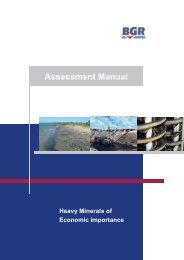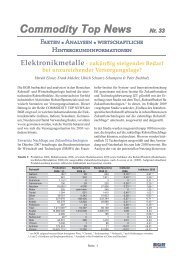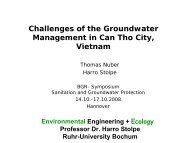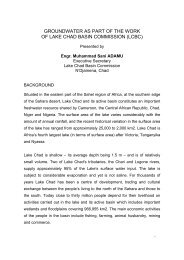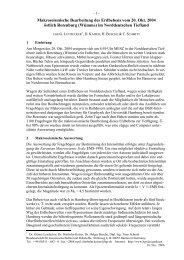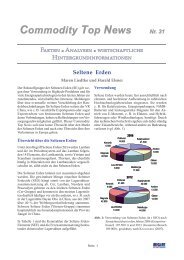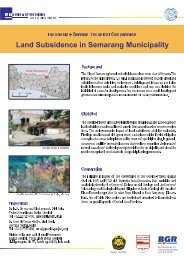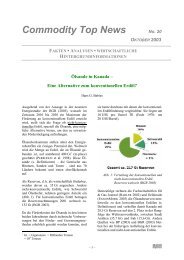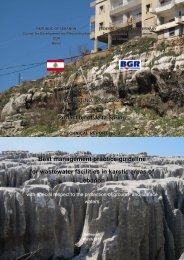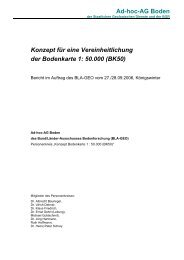THE SMOOTH SOUNDING GRAPH. A Manual for Field Work ... - BGR
THE SMOOTH SOUNDING GRAPH. A Manual for Field Work ... - BGR
THE SMOOTH SOUNDING GRAPH. A Manual for Field Work ... - BGR
You also want an ePaper? Increase the reach of your titles
YUMPU automatically turns print PDFs into web optimized ePapers that Google loves.
46<br />
accuracy is not so important they may perhaps be lazy in measuring the<br />
distance from the centre point to the electrode. But this L/2-distance<br />
must be accurate because as we have already seen the K-factor is of<br />
great influence and 1% error in L/2 causes 1% error in the sounding<br />
graph.<br />
In order to check whether the electrode is placed on top of a water-pipe<br />
(or on a buried cable) the electrode may be shifted aside perpendicular to<br />
the normal lay-out. (Doing this one has to take care on a correct right<br />
angle!)<br />
If there is a change in the recorded ρa-value, than the curve is disturbed;<br />
the ascending branch is not real. The same can be done passing a wire-<br />
mesh-fence, and also to by-pass obstacles (houses, small lakes, etc.).<br />
Last not least measuring along a railway or a saltwater channel it can be<br />
check whether there is any influence or not.<br />
Crossing a pipeline which runs somehow perpendicular to the lay-out a<br />
kick will be observed in the graph because just on top of the pipe the<br />
point-electrode will be changed into a line-electrode. Further on the influ-<br />
ence will vanish but difficulties remain <strong>for</strong> the interpreter because at first<br />
he has to smoothen the graph by hand.<br />
2.2.7. Leakage in the cable<br />
We assume that by shifting the electrodes A and B from L/2=75m to<br />
100m the insulation of one of the electrode cables will be spoiled. This<br />
point of leakage may be invisible <strong>for</strong> the operator and assistant on the<br />
ground near to one of the potential electrodes. Then the current will run<br />
to ground not only at the grounded electrodes, but additionally at the<br />
point of leakage. This cannot to be observed on the ampere meter, be-<br />
cause the amount of leakage current will be relatively small according to<br />
the high contact resistance at the point of leakage. As this point lies near<br />
to a potential electrode, this additional current flows into the ground, the<br />
current density between M and N increases, and the ρa point consequently<br />
drops out of the sounding graph in upward direction.



